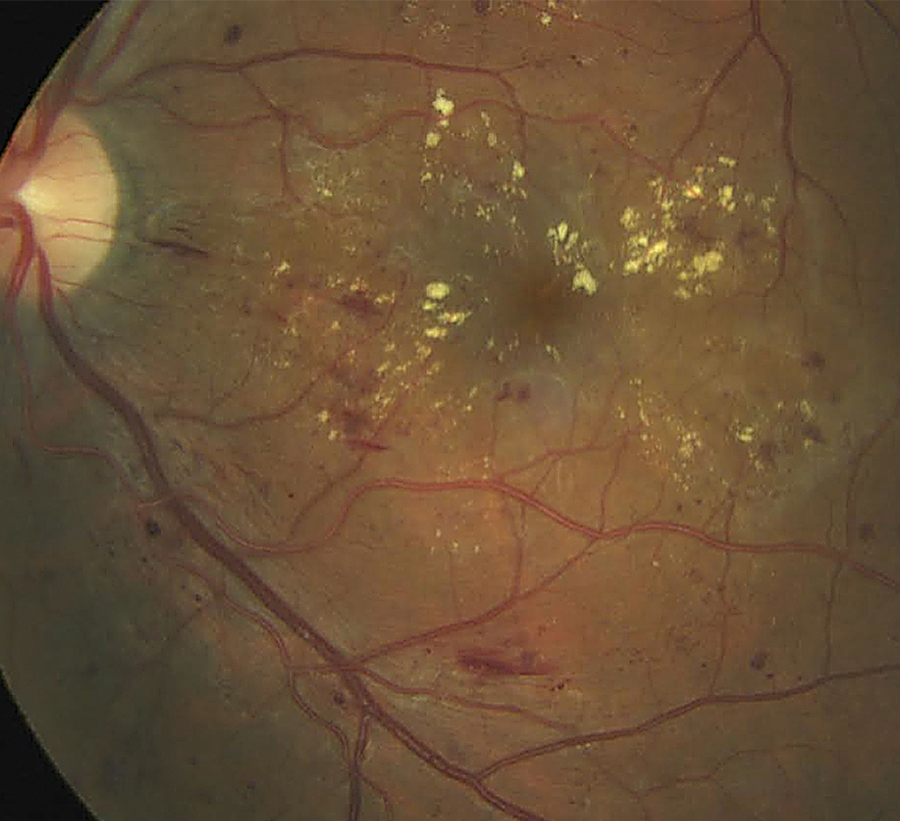 |
| Visual acuity was linked to various OCT biomarkers in this recent study, including the appearances of RPE and external limiting membrane. Photo: Richard Zimbalist, OD, and Amber Scharnweber, OD. Click image to enlarge. |
New research suggests a set of OCT biomarkers may provide insight into long-term visual outcomes in diabetic retinopathy/DME eyes treated over time with anti-VEGF therapy. Specifically, the investigative team from Italy found outer foveal and parafoveal thicknesses, as well as the absence of intact external limiting membrane/ellipsoid zone bands, were associated with worse long-term visual outcomes in these patients.
In the real-world study setting, long-term visual outcomes were generally favorable, and many eyes maintained better than 20/40 vision after more than five years from the initiation of anti-VEGF therapy, the researchers noted.
“Notably, results of the present study demonstrated a significant relationship between morphological alterations detected using structural OCT and long-term visual outcomes,” the authors wrote in their paper.
The investigation included 50 individuals who received anti-VEGF therapy and had resolved DME during at least one visit after five years of follow-up. Participants underwent structural OCT scans that were reviewed for distress of the neuroretina or RPE, in addition to topography to measure inner and outer retinal thicknesses.
A total of 61 eyes were included and divided into two subgroups: 24 eyes with a VA worse than 20/40 (poor/intermediate vision group) and 37 eyes with a VA of 20/40 or greater (good vision group).
The researchers noted that the external limiting membrane and RPE bands were more frequently disrupted or absent in the poor/intermediate vision group. Similarly, they found a disorganization of retinal inner layers that was more prevalent in this group. These eyes also had reduced foveal and parafoveal outer retinal thicknesses.
Regression analysis showed that VA was linked to the appearances of RPE and external limiting membrane, in addition to foveal and parafoveal outer retinal thicknesses.
Based on their findings, the authors concluded that early identification of these OCT biomarkers may help dictate therapy in individuals with DME.
Borrelli E, Grosso D, Barresi C, et al. Long-term visual outcomes and morphologic biomarkers of vision loss in eyes with diabetic macular edema treated with Anti-VEGF therapy. Am J Ophthalmol. September 9, 2021. [Epub ahead of print]. |

